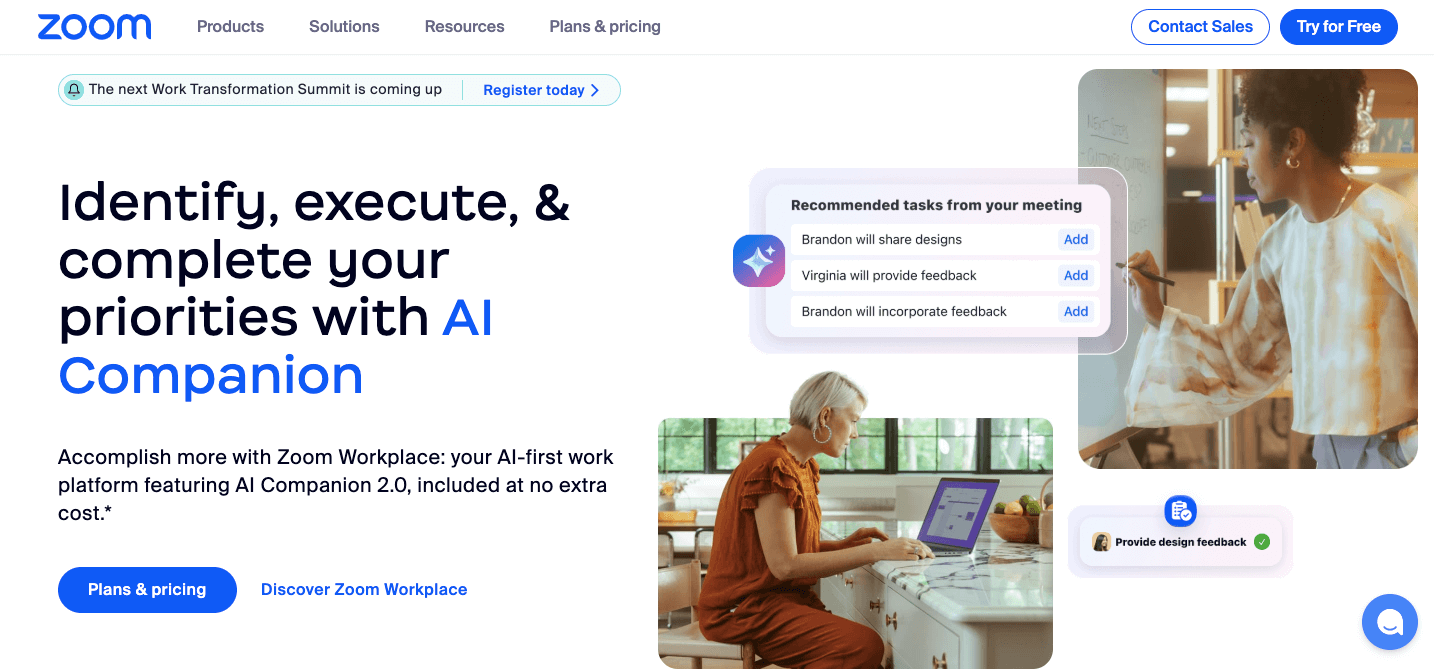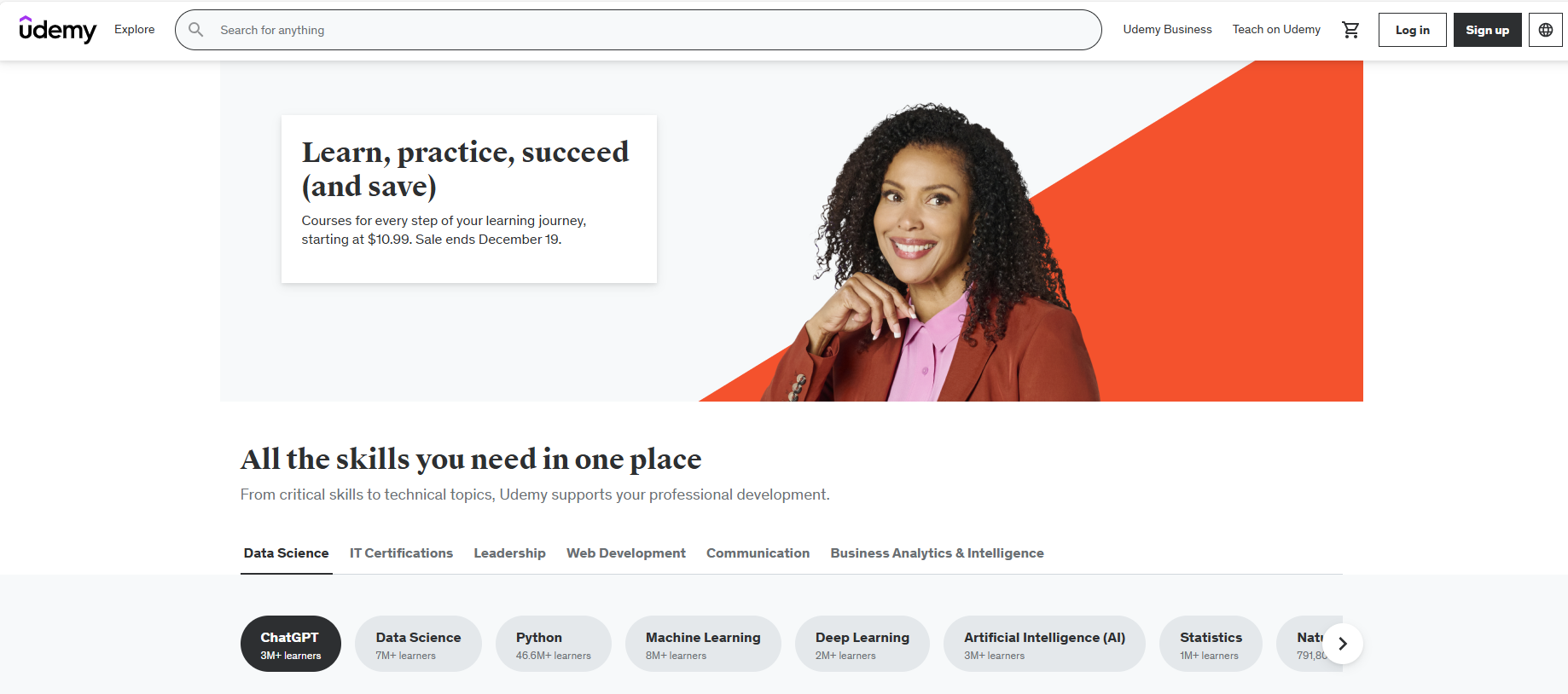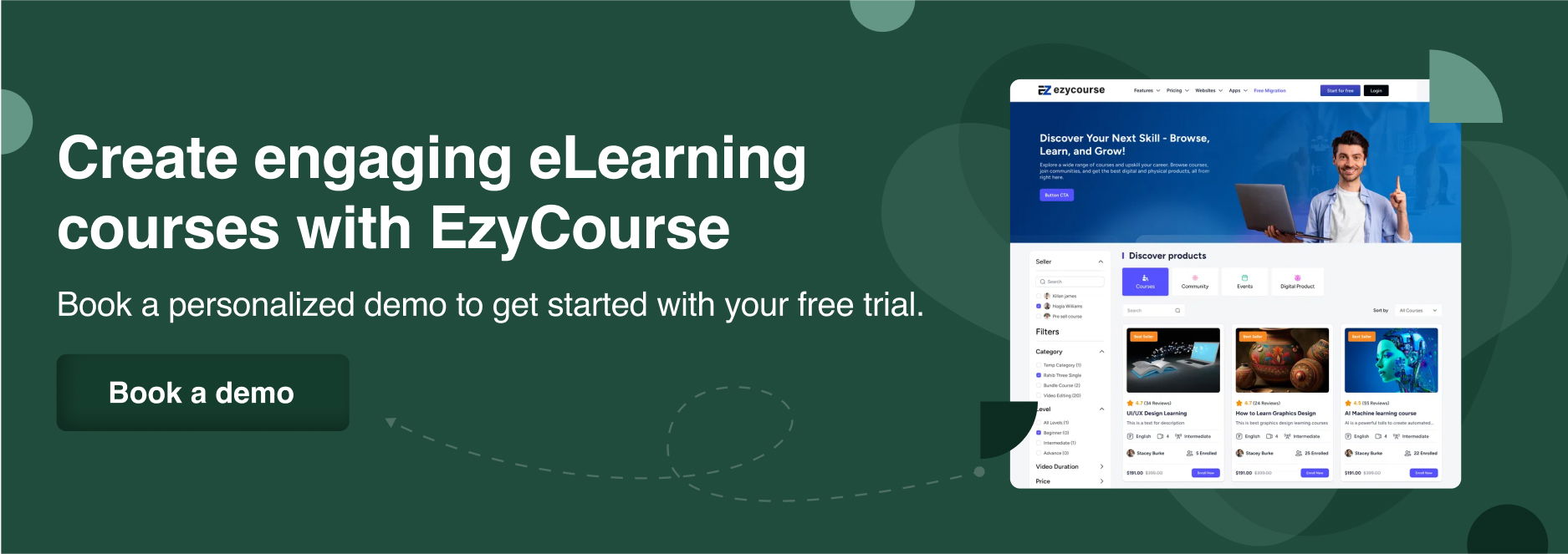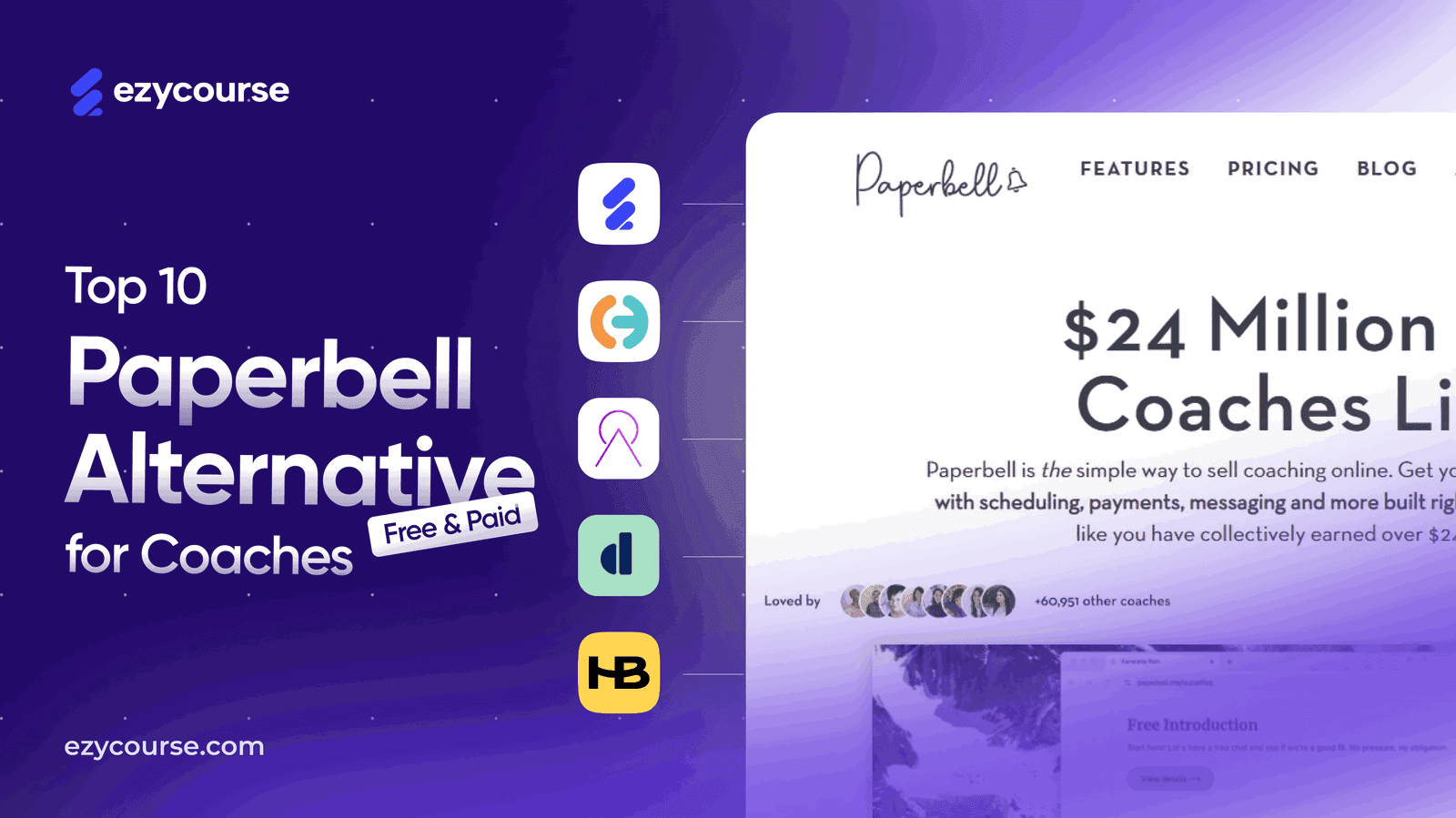If you want to teach online and earn money, but don’t know where to start, this is the right blog for you!
Earning money from online teaching is easier than ever now. The online education market is booming. It’s already a $388 billion industry. And you can earn between $1,000 to $5,000 a month selling online courses.
But here’s the truth most gurus won’t tell you: success isn't about being the smartest person in the room. It's about understanding the system.
Today, we’re going to break down how to choose the best platform, create engaging lessons, manage coaching sessions, and build a steady income. Let's get started!
The Reality of Online Teaching Income

Before we dive into the how-to, let's know how much you can actually make.
The data from recent industry studies reveals significant earning potential:
Online Tutoring Income: Tutoring rates range from $15 to $80 per hour based on subject expertise and experience, with the average online tutor earning $18.30 per hour according to Preply's 2024 data. High-demand subjects like math, physics, and chemistry can reach $30 to $60 per hour, while experienced specialists in test prep or advanced subjects can earn $70,000+ annually.
Course Creator Earnings: Course creators on platforms like Udemy earn anywhere from $0 to over $250,000 per year, with the average Udemy instructor making $3,306 annually. However, the average online course creator salary in the United States is $82,499 per year when working full-time. (Source)
Realistic Income Progression:
Starting out: $15-30/hour tutoring, $100-1,000/month course sales (based on lower-tier Udemy creator data)
Established: $30-60/hour tutoring, $3,000-8,000/month course revenue (mid-tier creator range)
Advanced: $60-100+/hour premium tutoring, $10,000-50,000+/month course business (top-tier creators approaching full-time salary equivalents) (Source)
Now, let’s talk about the feasible ways to teach online and earn money
How to Teach Online and Earn Money (7 Steps)
If you want to make money by teaching online, you have to follow these 7 steps:
Step 1: Choose Your Teaching Model
Step 2: Pick Your Subject
Step 3: Choose Your Tutoring Platform
Step 4: Create Courses That Actually Sell
Step 5: Price Your Course Wisely
Step 6: Market Your Courses Like a Pro
Step 7: Scale Beyond Your First Course
Step 1: Choose Your Teaching Model
Most people jump into online teaching without understanding the different business models. But to increase your income, you should choose the right teaching model for you.
Model 1: One-on-One Tutoring
Best for: Quick income
Income potential: $20-100 per hour
Time investment: High (every dollar requires your time)
This is where most people start. There are platforms like Preply and Tutor.com that make it easy to get your first students. Again, if you already have some students, you can offer your one-to-one coaching with platforms like EzyCourse.
Model 2: Group Coaching/Classes

Best for: Higher hourly rates, building community
Income potential: $50-200 per session
Time investment: Medium (one session, multiple students)
This is the sweet spot for many educators. If you teach 10 students for an hour instead of one, your effective hourly rate jumps to $300-500.
Model 3: Online Courses
Best for: Passive income, maximum scale
Income potential: $1,000-50,000+ per month
Time investment: Front-loaded (create once, sell forever)
This is where the real money is. Create a course once, and sell it to thousands of students. We've seen course creators go from zero to $10,000 monthly recurring revenue in less than 12 months.
EzyCourse has helped course creators build their future. Want to know how? This is an all-in-one online course platform with features like course creation, coaching, community building, memberships, email marketing, mobile apps, and so on.

Step 2: Pick Your Subject
You must choose the right subject to teach your students. You should consider the following things while picking a subject to teach:
Teach What You Know – You won't be able to provide the right teaching and guidance to a student if you don't know what you are teaching. Therefore, your first task is to select a subject in which you have expertise.
Know Your Students – Think about who you want to teach. Your teaching style, research, and deliverables will be different based on your student types. Your students can be school kids, college students, or adults.
Check Demand – Some subjects have more students looking for help but fewer tutors available. Research which subjects are in demand.
Use the Right Tools – Some subjects need special software or teaching tools. So, before teaching online, you must have all the tools you need.
Solve Problems – Your students are learning from you to get the best knowledge. You must provide solutions to every problem that your students face. If you can help them overcome challenges, more students will want to learn from you.
Releated Read: How To Earn Money By Teaching Physics Online In 2025
Step 3: Choose the Best Online Platforms to Teach and Earn Money
If you want to teach online and earn money, you must choose the right online teaching platforms for tutors. After testing dozens of sites to teach online and earn money, here are the winners:
1. EzyCourse – Best for Course Creation, Coaching & Community Building

Using the all-in-one platform EzyCourse, you can create, manage, and sell your online teaching courses. Whether you want to create courses or run coaching, EzyCourse has all the features for you.
This platform simplifies your online course hosting, community engagement, and payment handling. Plus, you’ll get a free white-label mobile app included with selected plans.
What Does It Offer?
Host online courses, coaching sessions, live classes, and webinars
Build membership sites and exclusive communities
Integrated payment processing for easy transactions
Chat and messaging features for student interaction
Zoom premium license
Free white-label mobile app
Pros
All-in-one platform for courses, coaching memberships, and communities
Seamless payment integration with multiple options
Built-in communication tools to engage students
Cons
No free plan
Pricing
Essential plan - starts at $59/month
Pro plan - starts at $139/month
Unlimited plan - starts at $199/month
Elite plan - starts at $299/month
*Pricing may be subject to change at any time.
Best For: EzyCourse is best for educators, coaches, and businesses looking for a complete course platform with built-in community and monetization tools.

2. Zoom – Best for Live Classes

Zoom is a popular video call app that works well for live teaching. It allows you to interact with students in real time.
What Does It Offer?
High-quality video and audio
Screen sharing easily and breakout rooms for group work
Option to record lessons for students to watch later
Pros:
Easy to use for live classes
Great for interactive lessons
Students can replay recorded sessions
Cons:
Doesn’t have tools for course management
Not ideal for pre-recorded courses
Best For: Teachers who prefer live, real-time interaction with students.
Interesting Fact: EzyCourse comes with native integration with Zoom. It offers Zoom premium license with up to 300 attendees. So, you don’t have to use Zoom from outside, you can get it directly from your EzyCourse dashboard.

3. Google Classroom – Best for Organizing Lessons

Online tutors can easily manage their assignments and communicate with students with Google Classroom. It’s free and easy to use.
What Does It Offer?
Organizes assignments and grades
Works with Google Docs and Drive
Allows real-time collaboration
Pros:
Free to use
Simple setup
Great for managing multiple students
Cons:
Doesn’t have built-in payment options
Not designed for selling courses
Best For: If you need a structured way to manage classes and assignments, it is best for you.
Interesting Fact: EzyCourse comes with all the features that Google Classroom provides. So, you may not require to juggle between multiple teaching platforms if you use EzyCourse.
4. Udemy – Best Online Course Marketplace

Udemy is the biggest online course marketplace. Through this platform, you can sell your online courses to a large audience.
What Does It Offer?
Millions of students worldwide
Marketing support from Udemy
Simple course creation tools
Pros:
Huge built-in audience
Great for beginners and experienced educators
No need to do your own marketing
Cons:
High competition
Udemy takes a share of your earnings
Best For: Teachers who want to sell courses to a global audience with minimal effort.
Interesting Fact: EzyCourse has an add-on named Marketplace for Creators. With this, you can create your own platform like Udemy easily within a few moments. Try it now!
Overall, we recommend you pick an all-in-one platform that fits your needs altogether.
Step 4: Create Courses That Actually Sell (The Million-Dollar Framework)
Did you know that most online courses fail? Not because the content is bad, but because creators don't understand what students actually want to buy. Here's the killer framework that works:
The IMPACT Course Creation Method

I - Identify the transformation
M - Map the journey
P - Package the solution
A - Add engagement elements
C - Create a community
T - Test and optimize
Phase 1: Identify the Transformation
Students don't buy courses, they buy transformations. Your course needs to take someone from Point A (current frustrating state) to Point B (desired future state).
Bad course title: "Introduction to Digital Marketing"
Good course title: "From Zero to $5K: Build a Profitable Digital Marketing Agency in 90 Days"
See the difference? The second title promises a specific transformation with a clear timeline.
Phase 2: Map the Journey
Try to break down your transformation into logical and sequential steps. Each module should build on the previous one. Create momentum toward the end goal.
Winning course structure:
Module 1: Foundation (mindset + basics)
Module 2: Strategy (the plan)
Module 3: Implementation (taking action)
Module 4: Optimization (improving results)
Module 5: Scaling (growing beyond basics)
Phase 3: Package the Solution
Here's where most people go wrong – they create information products instead of transformation products. Your course needs:
Video lessons (primary content delivery)
Worksheets and templates (implementation tools)
Case studies (proof it works)
Action steps (what to do next)
Community access (ongoing support)
Phase 4: Add Engagement Elements
Completion rates separate successful courses from failures. Students who finish courses leave better reviews, refer more students, and buy more products.
Engagement strategies that work:
Progress tracking
Gamification
Weekly live Q&A sessions
Student showcase opportunities
Interactive assignments
This is where EzyCourse lets you win. This platform comes with gamification features so that you can gamify your courses. Plus, it provides features like progress tracking.
Phase 5: Create Community
The most successful online educators aren't just teachers – they're community builders. Students stick around for the content, but they stay for the community.
Community building strategies:
Private Facebook groups or Discord servers
Weekly mastermind calls
Student success spotlights
Peer-to-peer networking opportunities
Advanced training for engaged members
EzyCourse offers built-in Facebook-like communities. You can create very interactive communities along with courses.

Phase 6: Test and Optimize
Launch fast, and improve constantly. Your first course won't be perfect, and that's okay. Get it to 80% quality, launch it, gather feedback, and iterate.
Key metrics to track:
Course completion rates
Student satisfaction scores
Refund rates
Upsell conversion rates
Community engagement levels
Step 5: Price Your Course Wisely
Pricing psychology in online education is fascinating. If you price too low, people assume your course is worthless. If the price is too high without proper positioning, nobody might purchase your course!
The Sweet Spot Pricing Strategy
Beginner courses: $97-297
Perfect for building your first customer base
Low enough for impulse purchases
High enough to attract serious students
Intermediate courses: $297-797
Your core offering for most niches
Allows for payment plans
Positions you as an expert, not a beginner
Advanced/Premium courses: $997-2,997+
For comprehensive transformations
Includes high-touch elements (coaching calls, done-for-you templates)
Targets serious, committed students
The EzyCourse Pricing Advantage

EzyCourse's flexible payment options let you offer:
One-time payments
Payment plans (2, 3, or 6 months)
Subscription models
Donation plans
Tiered pricing with different access levels
This flexibility typically increases sales by 25-40% compared to single-payment options.
Step 6: Market Your Courses Like a Pro
The best course in the world won't sell if nobody knows about it. Here's your marketing playbook:
Content Marketing (The Long Game)
Blog posts targeting your niche keywords
YouTube videos solving specific problems
Social media content showcasing your expertise
Guest appearances on podcasts and blogs
Social Proof (The Trust Builder)

Student success stories and case studies
Video testimonials
Before/after transformations
Industry endorsements
Launch Strategy (The Revenue Booster)
Instead of quietly releasing your course, create an event around it:
Pre-launch (2-4 weeks):
Build anticipation with behind-the-scenes content
Collect email addresses with a free mini-course
Share your course creation journey
Launch week:
Limited-time pricing
Live Q&A sessions
Student success spotlights
Social media countdown
Post-launch:
Gather and showcase early student wins
Collect feedback for improvements
Plan your next course based on student requests
Step 7: Scale Beyond Your First Course

One course is a start. A course business is wealth-building. Here's how to scale:
The Course Ecosystem Approach
Instead of creating random courses, build a learning pathway:

Foundation Course → Intermediate Course → Advanced Course → Mastermind/Coaching
This creates a natural progression that increases customer lifetime value from $297 to $3,000+.
Revenue Stream Diversification
Courses: Your primary income
Coaching: High-ticket, personalized service
Community: Recurring monthly revenue
Templates/Tools: Low-maintenance income
Affiliate marketing: Passive income from recommendations
The Million-Dollar Journey
Free content to build trust
Lead magnet (free mini-course) captures emails
Beginner course ($297) creates first-time course buyers
Advanced course ($797) deepens the student relationship
Coaching/Mastermind ($2,997) can provide maximum value
Community membership ($97/month) to generate recurring revenue
How to Create A Good Online Course? Few More Tips!
If you decide to teach students online through offering courses, you must know how to create a good one. You must create a useful, well-structured, and easy-to-follow course to stand out.
However, in the following ways, you can create a good online course that people will love.
1. Set Clear Learning Goals
First, you must set clear learning goals for your students and then create lessons for them. It will help your students understand what to expect from your course lesson.
For example, if you build a web development course, it should have the following goals:
Learn to build websites that work on all devices.
Use JavaScript to create interactive web pages.
Make full-stack applications with Node.js and MongoDB.
When students see a clear goal, they know if the course is right for them.
2. Keep Your Lessons Organized
You should organize your course lessons in a step-by-step order. If topics are mixed up, students will get confused.
A well-organized course should:
Start with the basics and move to advanced topics.
Have short, focused lessons.
Include real-world examples.
Well-organized courses and lessons make learning smooth and easy.
3. Make Lessons Interesting
Students lose interest if lessons are too long or boring. Keep them engaged with:
Videos and images to explain ideas.
Quizzes and exercises to test knowledge.
Hands-on projects to apply what they learn.
For example, a web development course could have:
Simple coding tasks after each lesson.
A project to build a personal website.
A final challenge to bring all skills together.
4. Keep It Simple
Use easy words and explain things clearly. Avoid technical terms unless needed. If a concept is complex, break it down into smaller steps.
For example, when teaching JavaScript, follow this order:
Explain what variables and functions are.
Show how to use loops and conditions.
Teach how to build a simple app.
Step-by-step learning makes everything easier to understand.
5. Show How It’s Useful
People take courses to use what they learn in real life. Make sure your lessons include practical skills. For example, a website-building course could include:
Making a personal portfolio.
Creating an online store.
Designing a blog with user login.
When students see real-world use, they stay motivated.
6. Use Real-Life Examples
Show students how lessons apply to real-world situations. This makes learning more useful.
For example:
In a marketing course, show real company strategies.
In a coding course, students are allowed to build actual websites.
When students see real examples, they understand better.
7. Add Visuals to Explain Ideas
Many students learn faster with pictures and videos.
There are several ways to include visuals:
Charts and graphs for numbers.
Diagrams for complex topics.
Step-by-step videos for demonstrations.
Good visuals make lessons clearer and easier to remember.
8. Let Students Track Their Progress
Seeing progress keeps students motivated. You can help them track learning in the following ways:
A checklist to mark completed lessons.
A progress bar to show how much is done.
A certificate after finishing the course.
This helps students stay on track and feel accomplished.
9. Keep Your Course Updated
Information changes over time. You must keep your course fresh and relevant. You can update your course in the following ways:
Remove outdated lessons.
Add new content based on trends.
Use student feedback to improve.
Self-Hosting vs. Third-Party Platforms: Which One is Right for You To Teach Online?
You need to choose the right hosting platform to host your online courses. Mainly, you have two options. Those are:
Self-hosting – Hosting the course on your own website. You can create your course website within a few minutes with platforms like EzyCourse
Third-party platforms – You can easily host your courses on third-party course marketplace platforms like Udemy, Coursera or edX.
Self-hosting and third-party platforms have their own benefits and drawbacks. Now, I’ll explain the pros and cons of each platform so that you can understand which one is best for you.
Self-Hosting Your Course
Self-hosting means you create and manage your own website to sell your course. You have full control, but it requires effort to set up and maintain.
Pros
✔ Full control – You decide how everything looks and works.
✔ Better branding – Your website reflects your personal style, not a platform’s.
✔ No platform fees – You keep all the money you make.
✔ Flexible pricing – You can set your own course price and payment options.
Cons
✘ Takes time – Adding features like payments and student management takes effort.
✘ Security concerns – You are responsible for protecting student data.
Using a Third-Party Platform
A third-party platform provides ready-made tools to create, host, and sell your course. It’s easier to use but has some limitations.
Pros
✔ Easy to set up – No technical knowledge needed.
✔ Comes with built-in tools – Platforms like EzyCourse include payment processing, analytics, and student management.
✔ Larger audience – Platforms already have students looking for courses.
✔ Security handled for you – The platform manages updates and data protection.
Cons
✘ Limited customization – You may not have full control over design and branding.
✘ Platform rules apply – Your course must follow their terms and pricing policies.
Which One Should You Choose?
Whether you should host your courses on your self-hosting platforms or a third-party website depends on your needs.
If you choose self-hosting you will enjoy your course’s full control. So, you had better choose a self-hosted platform to get the full control to your business.
Simple Tips to Make Money Teaching Online
Many successful online teachers started small before they made big money. If you want to teach online and earn, here are some simple tips to follow.
1. Take It One Step at a Time: Don’t rush to make thousands overnight. Start small, focus on creating a good course, and grow from there. Slow and steady progress works best.
2. Choose the Right Topic: Pick something you know well and that people want to learn. The best topics are a mix of your skills and what people are willing to pay for.
3. Teach What You Love: If you don’t enjoy the topic, your students will notice. Passion makes teaching easier and keeps you motivated. You should pick a subject that excites you.
4. Keep Learning: Even experts keep learning. You must update your knowledge and skills to stay confident in what you teach. The more you grow, the better your course will be.
5. Make Learning Easy: You should break lessons into small, simple steps. Use examples, visuals, and real-life situations to help students understand better.
6. Focus on Good Quality: Clear video and sound make a big difference. I recommend you invest in a good microphone and camera or use quality screen recording software. A professional setup builds trust.
7. Test Your Course Idea: Before creating a complete course, see if people are interested. Ask your audience, do some research, or offer a free mini-course to test demand.
8. Pick the Best Platform: You should choose the right platform to host your courses. Wrong decisions can hamper your online teaching journey.
Challenges of Teaching Online

Online teaching is flexible. But you may often face some challenges with it. Online tutors usually face the following challenges:
1. Staying Focused: The toughest task is to stay focused on your decision. You should follow a fixed routine so that you won’t get distracted. I recommend that you plan your time well and follow a schedule.
2. Feeling Alone: In a physical classroom, teachers and students interact face-to-face. But in online class, you may feel alone as you won’t be able to contact directly with your students.
3. Keeping Students Interested: Students may lose focus without in-person lessons. Teachers also find it harder to keep classes fun and engaging.
4. Managing time: Online teaching gives flexibility, but no fixed hours can be tricky. You will face challenges in balancing your work and personal life if you don’t follow a proper routine.
5. Dealing with Tech Issues: Slow internet and software problems can interrupt lessons. Teachers must be ready to fix issues quickly to avoid delays.
6. Learning New Technology: Teaching online requires knowing how to use digital tools. Teachers need to learn video calls, screen sharing, and online platforms.
I Want to Teach Online and Earn Money…(Do You Really?)
If you really want to teach online and earn money, don’t take online teaching as just a side hustle. It's a legitimate path to financial freedom. The educators making serious money understand that success comes from building systems, not just sharing knowledge.
EzyCourse gives you those systems out of the box. This all-in-one platform handles everything from course delivery to community management to coaching management to payment processing.
But here's the real secret: the platform is just the vehicle. Your success depends on following the strategies in this guide consistently.
Start today. Your future students are already looking for what you have to teach.
Ready to launch your online teaching business? Get started with EzyCourse's free trial and turn your expertise into income within 30 days.







